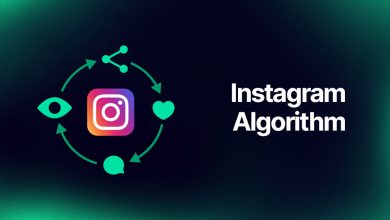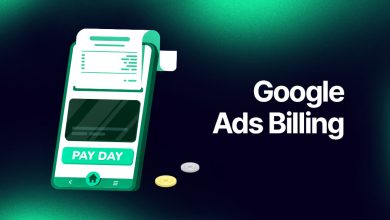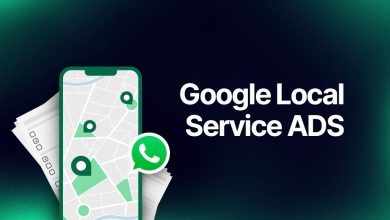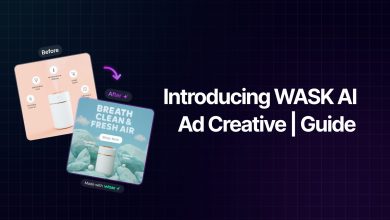How Many Weeks for an Awareness Campaign on Meta and Google Ads
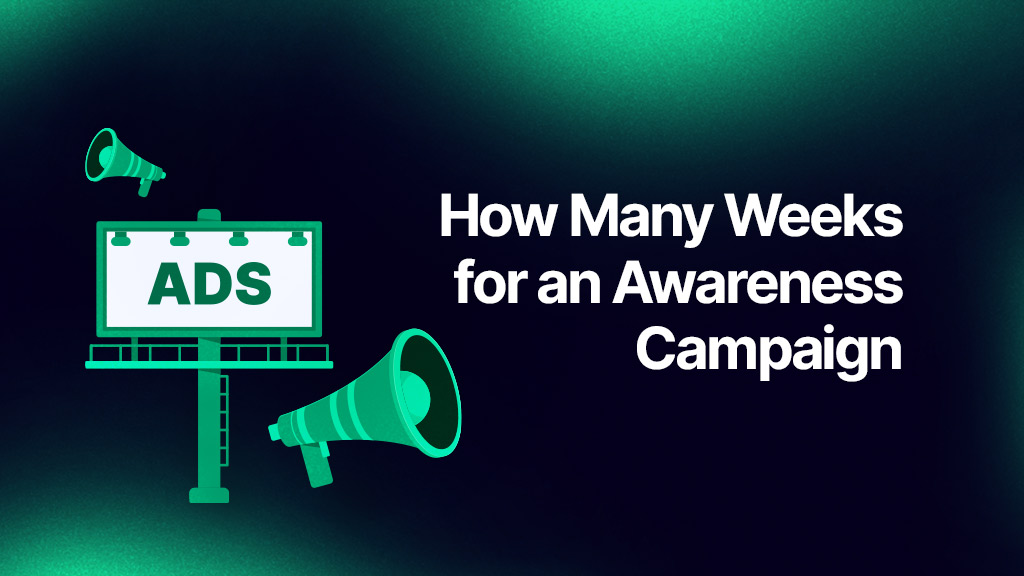
Table of Contents
- Understanding Awareness Campaigns
- Planning Awareness Campaign
- Platforms for Awareness Campaigns
- How Long Does It Take Awareness Campaign on Meta and Google Ads?
- Creative Strategies for Awareness Ads
- How to Optimize Awareness Campaigns on Meta and Google
In the fast-paced world of digital marketing, identifying the optimal duration for an awareness campaign on platforms like Meta (formerly Facebook) and Google Ads can be a strategic challenge. Understanding the ideal timeframe requires careful consideration of various factors, including campaign goals, audience engagement dynamics, and platform capabilities.
Here, we dive into the details of planning and executing an effective awareness campaign on Meta and Google Ads, exploring the significance of brand awareness, the importance of creative strategies, and the process of optimizing campaign duration for maximum impact.
Join us as we explore the strategies and insights necessary to answer the important question: How many weeks for an awareness campaign on Meta and Google?
Understanding Awareness Campaigns
Awareness campaigns serve as critical instruments for increasing brand visibility, promoting products, and advocating causes. These campaigns are designed to create familiarity and recognition among target audiences, laying the foundation for further engagement and conversion.
Defining Brand Awareness
At the core of awareness campaigns lies the foundational concept of brand awareness This term refers to how well consumers recognize and recall a brand, which plays a fundamental role in shaping consumer perceptions and influencing purchasing decisions. Brand awareness manifests in two primary forms:
Brand Recognition: This refers to consumers’ ability to identify the brand when presented with its name, logo, or visual elements. Successful brand recognition ensures that the brand stands out from competitors and connects with consumers on a visual level.
Brand Recall: Brand recall occurs when consumers can remember the brand spontaneously or when presented with a related product or service. Strong brand recall indicates that the brand has made a lasting impression on consumers’ minds, increasing the likelihood of them choosing the brand over alternatives.
Importance of Awareness Ads
Awareness ads play an important role in shaping consumer perceptions and influencing purchasing decisions. By establishing a strong presence in the minds of consumers, brands can create trust, loyalty, and preference over time. Effective brand awareness campaigns play multiple roles in achieving marketing objectives:
- Building Trust and Credibility: Having a strong brand presence creates trust and credibility among consumers, which leads to increased brand loyalty and advocacy.
- Driving Customer Acquisition: By increasing brand visibility and recognition, awareness campaigns attract new customers and expand the brand’s customer base.
- Differentiating From Competitors: In a crowded market, brand awareness campaigns set the brand apart from competitors, highlighting its unique value proposition and offerings.
- Supporting Long-Term Growth: Sustained brand awareness efforts contribute to long-term growth by creating a loyal customer base and reinforcing the brand’s position in the market.
Understanding the aspects of brand awareness is essential for creating effective awareness campaigns that connect with audiences and leave a lasting impression. Whether aiming to introduce a new brand to the market or reinforce the identity of an established brand, the foundation of success lies in building strong brand awareness through targeted marketing efforts.
Planning Awareness Campaign

Creating and executing a successful awareness campaign requires careful planning and strategic considerations. From defining campaign objectives to selecting the right platforms and optimizing resources, each step in the planning process plays a crucial role in achieving desired outcomes.
Setting Clear Objectives
The foundation of any awareness campaign lies in setting clear and measurable objectives. Whether the goal is to increase brand recognition, drive website traffic, or raise awareness about a social cause, defining specific objectives provides a roadmap for campaign success.
Objectives should be SMART (Specific, Measurable, Achievable, Relevant, Time-bound) to ensure clarity and effectiveness.
Understanding Target Audience
Understanding the demographics, interests, and behavior of the target audience is critical to creating a relevant and effective awareness campaign. Conducting market research, using audience insights, and creating buyer personas can help marketers gain valuable insights into the preferences and pain points of their target audience, allowing for more targeted and personalized messaging.
Creating Engaging Messaging
Engaging messaging lies at the heart of any successful awareness campaign. Whether through attractive visuals, persuasive copywriting, or engaging storytelling, the message should connect with the target audience and evoke emotion.
A clear and compelling message not only grabs attention but also communicates the brand’s value proposition and key benefits effectively.
Selecting the Right Platforms
Choosing the right platforms for distributing awareness campaigns is essential for optimizing reach and engagement. Platforms such as Meta (formerly Facebook), Google Ads, Instagram, and LinkedIn offer diverse advertising options for different audience segments and campaign objectives.
Selecting the most suitable platforms based on target audience demographics, user behavior, and campaign goals ensures optimal campaign performance and ROI.
Allocating Budget and Resources
Allocating budget and resources effectively is important for the success of an awareness campaign. Marketers should consider factors such as ad spend, creative production costs, and staffing requirements when budgeting for their campaigns.
By aligning budget allocation with campaign objectives and expected outcomes, marketers can ensure that resources are used efficiently to achieve maximum impact.
Establishing KPIs and Metrics
Defining key performance indicators (KPIs) and metrics allows marketers to track and measure the success of their awareness campaigns. Whether it’s brand lift, ad recall, website traffic, or social engagement, establishing relevant KPIs enables marketers to evaluate campaign performance and make data-driven decisions to optimize future campaigns.
Testing and Optimization
Continuous testing and optimization are essential components of effective awareness campaigns. Marketers should A/B test different ad creatives, messaging variations, and audience targeting strategies to identify what resonates best with their target audience.
By analyzing campaign performance data and iterating based on insights gained, marketers can improve their campaigns to drive better results over time.
By following these strategic planning steps, marketers can create engaging and impactful awareness campaigns that resonate with their target audience, drive brand recognition, and achieve their marketing objectives effectively.
Platforms for Awareness Campaigns
Selecting the right platforms for distributing awareness campaigns is essential for reaching and engaging the target audience effectively. With so many digital advertising platforms available, marketers have a diverse range of options to choose from based on audience demographics, campaign objectives, and budget considerations.
Let’s explore some of the key platforms commonly used for running awareness campaigns:
Meta Ads for Awareness
Formerly known as Facebook, Meta offers a powerful advertising platform with extensive targeting options and a massive user base. With over 2.8 billion monthly active users across its family of apps, including Facebook, Instagram, and Messenger, Meta provides unparalleled reach and targeting capabilities for awareness campaigns.
- Facebook Ads: With advanced targeting options based on demographics, interests, behaviors, and custom audience segments, Facebook Ads allow marketers to reach highly specific audience groups with tailored messaging.
- Instagram Ads: Using visually engaging content formats such as photo ads, video ads, and carousel ads, Instagram Ads enable marketers to connect with younger audiences and showcase their brand creatively.
- Messenger Ads: Messenger Ads offer a unique opportunity to engage users directly within the Messenger app, using personalized messaging and chatbot functionalities to drive awareness and interaction.
Google Ads for Brand Building
As the world’s leading search engine, Google Ads provides powerful tools for reaching potential customers through search, display, and video advertising. By strategically targeting relevant keywords and demographics, brands can increase their visibility and generate awareness across Google’s vast network of websites and platforms.
- Search Ads: Google Search Ads enable marketers to display targeted ads to users actively searching for relevant keywords, driving traffic and awareness at the moment of intent.
- Display Ads: Google Display Ads allow marketers to showcase visually compelling ads across millions of websites and apps within the Google Display Network, reaching users as they browse online content.
- YouTube Ads: With over 2 billion logged-in monthly users, YouTube offers a highly engaged audience for awareness campaigns. YouTube Ads allow marketers to reach users with video content tailored to their interests and behaviors.
Other Platforms
In addition to Meta and Google Ads, several other platforms offer unique opportunities for running awareness campaigns:
- LinkedIn Ads: LinkedIn provides a professional networking platform ideal for B2B marketers looking to target decision-makers and professionals with relevant content and messaging.
- X Ads: X Ads enable marketers to reach a global audience with real-time updates and conversations, using promoted tweets and trends to amplify brand awareness.
- Snapchat Ads: Snapchat offers a unique platform for reaching younger audiences with engaging multimedia content, including photo and video ads, augmented reality (AR) experiences, and sponsored lenses.
How Long Does It Take Awareness Campaign on Meta and Google Ads?
Determining the optimal duration for an awareness campaign on Meta and Google Ads involves careful consideration of various factors, including campaign objectives, target audience dynamics, and budget constraints. While there is no one-size-fits-all answer, understanding the typical timeline and key considerations can help marketers plan and execute effective campaigns.
Factors Influencing Campaign Duration
Several factors influence the duration of an awareness campaign on Meta and Google:
- Campaign Goals: The specific objectives of the campaign, such as increasing brand awareness, driving website traffic, or promoting a new product launch, can impact the campaign duration. Longer-term goals may require extended campaign durations to achieve significant results.
- Target Audience: The characteristics and behavior of the target audience play an important role in determining campaign duration. Factors such as audience size, engagement levels, and frequency of exposure to the campaign messaging can influence how long it takes to achieve desired outcomes.
- Budget Allocation: Budget constraints often determine campaign duration, as marketers must balance the need for sustained visibility with available resources. Higher budgets may allow for longer campaign durations, while limited budgets may need shorter, more focused campaigns.
- Ad Frequency and Reach: The frequency at which ads are shown to the target audience and the overall reach of the campaign can impact campaign duration. Higher ad frequency and broader reach may require longer campaign durations to achieve optimal results.
Typical Campaign Duration
While the optimal duration of an awareness campaign on Meta and Google varies depending on specific circumstances, certain benchmarks and best practices can provide guidance:
Short-Term Campaigns: Short-term campaigns typically run for a few days to a few weeks and are often used for time-sensitive promotions, events, or product launches. These campaigns aim to generate immediate awareness and drive short-term results.
Medium-Term Campaigns: Medium-term campaigns typically run for several weeks to a few months and are suitable for building sustained brand awareness, launching new initiatives, or targeting specific audience segments. These campaigns allow for a balance between short-term impact and long-term brand building.
Long-Term Campaigns: Long-term campaigns run for several months to a year or more and focus on establishing and maintaining brand presence, increasing audience engagement, and driving ongoing brand loyalty. These campaigns require sustained investment and commitment but can provide significant results over time.
The duration of an awareness campaign on Meta and Google depends on various factors, including campaign goals, target audience dynamics, and budget considerations. Understanding these factors and implementing best practices for testing and optimization can help marketers plan and execute effective campaigns that drive meaningful results and long-term brand growth.
Creative Strategies for Awareness Ads

Creating attractive and memorable creative assets is essential for capturing the audience’s attention and effectively communicating the message of an awareness campaign. Here are some creative strategies to consider when developing awareness ads:
1. Captivating Visuals
Visual elements such as images, illustrations, and videos can be powerful tools for conveying the essence of a brand or message. Eye-catching visuals can instantly grab attention and evoke emotions, making them important components of effective awareness ads. Use high-quality images and videos that align with the brand identity and appeal to the target audience.
2. Emotional Storytelling
Emotionally loaded storytelling can create a deep connection with the audience and leave a lasting impression. Create narratives that evoke emotions such as joy, inspiration, empathy, or nostalgia to engage viewers on a personal level. By weaving a compelling story around the brand or message, marketers can provoke strong emotional responses and drive meaningful engagement.
3. Clear and Concise Messaging
In the fast-paced digital landscape, attention spans are limited, making it important to deliver the message quickly and concisely. Use clear and concise messaging that communicates the core value proposition or key message of the campaign in a compelling and easily digestible format. Avoid filling the ad with excessive text or information that may overwhelm or confuse viewers.
4. Interactive Elements
Interactive elements such as quizzes, polls, and games can increase engagement and encourage active participation from the audience. Incorporate interactive features into ads to create immersive experiences that capture attention and drive interaction. Interactive ads not only entertain viewers but also provide valuable insights into audience preferences and behaviors.
5. Personalization
Personalized ads tailored to the interests, preferences, and demographics of the target audience can significantly increase engagement and relevance. Using data-driven insights to deliver personalized messaging and creative content that speaks to individual viewers. Personalization generates a sense of connection and relevance, driving higher levels of engagement and brand affinity.
6. Humor and Creativity
Humor and creativity can be effective tools for making ads memorable and shareable. Incorporate humor, wit, or clever wordplay into ads to entertain viewers and leave a positive impression. However, ensure that humor aligns with the brand’s tone and values and resonates with the target audience to avoid potential misinterpretation or backlash.
By implementing these creative strategies, marketers can develop compelling awareness ads that resonate with their target audience, drive engagement, and ultimately achieve campaign objectives effectively.
How to Optimize Awareness Campaigns on Meta and Google
Optimizing awareness campaigns on Meta and Google is important for increasing their effectiveness and achieving desired outcomes. Here are key strategies for optimizing campaigns on these platforms:
1. Define Clear Objectives
Clearly define the objectives of your awareness campaign, whether it’s increasing brand awareness, driving website traffic, or promoting a specific product or service. Aligning campaign goals with measurable KPIs ensures clarity and enables effective optimization.
2. Audience Targeting
Use advanced audience targeting options offered by Meta and Google Ads to reach relevant audience segments. Segment audiences based on demographics, interests, behaviors, and purchase intent to deliver tailored messaging and increase campaign effectiveness.
3. Ad Creative Optimization
Continuously test and optimize ad creative elements such as images, videos, copywriting, and calls-to-action to identify what resonates best with your target audience. Experiment with different formats, messaging variations, and creative concepts to grab audience attention and drive engagement.
4. Ad Scheduling and Frequency
Optimize ad scheduling and frequency to make sure that your ads are shown at the right time and frequency to increase reach and engagement. Use scheduling features to target specific days, times, and locations when your target audience is most active, and adjust ad frequency to maintain optimal exposure without overwhelming viewers.
5. Budget Allocation
Allocate budget strategically across different campaign elements, such as ad spend, creative production, and targeting options to maximize ROI. Monitor campaign performance and adjust budget allocation based on insights gained to optimize campaign efficiency and achieve desired results.
6. Performance Monitoring
Regularly monitor campaign performance metrics such as impressions, reach, engagement, and conversion rates to evaluate effectiveness and identify areas for improvement. Use analytics tools provided by Meta and Google Ads to track key performance indicators and make data-driven decisions for optimization.
7. Conversion Tracking
Implement conversion tracking mechanisms to measure the impact of your awareness campaigns on driving desired actions, such as website visits, sign-ups, or purchases. Track conversions across multiple touchpoints to attribute campaign success accurately and optimize campaign performance based on conversion data.
The duration of an awareness campaign on Meta and Google Ads should be carefully considered in light of campaign objectives, target audience characteristics, and available resources. By understanding the details of these platforms and implementing strategic planning and optimization techniques, brands can increase the impact of their awareness efforts and achieve their marketing goals. Additionally, analyzing Google Advertising cost before launching a campaign can help businesses allocate their budget effectively and maximize their return on investment.

How long do ads stay in review on Facebook?
The review time for Facebook ads varies but usually takes around 24 hours. However, factors like ad volume and complexity can affect this timeframe. If your ad is taking longer, you can check its status in Ads Manager or contact Facebook support for assistance.
What is WASK campaign optimization?
WASK Campaign Optimization is a platform that offers instant analysis of important metrics for all your Facebook and Google campaigns. Using smart algorithms, WASK optimizes campaigns without requiring technical knowledge. This optimization process allows you to reach more potential customers with the same budget, increasing the effectiveness of your awareness campaign efforts across digital channels.
What is an awareness ad campaign?
An awareness ad campaign is like introducing yourself at a party you’re not selling anything yet, just making sure people know you exist. These campaigns are designed to increase visibility and get your brand in front of the right audience without pushing for an immediate sale. The goal? To make people think, “Oh yeah, I’ve heard of them before,” when they eventually need your product or service.
How long should a brand awareness campaign last?
Think of a brand awareness campaign like growing a plant you won’t see results overnight. Ideally, it should run for at least 3 to 6 months to build recognition and trust. Shorter campaigns might give a temporary boost, but real awareness happens when people see your brand consistently over time. If you stop too soon, it’s like walking away before the seeds have a chance to grow.
What is awareness in Meta ads?
In Meta Ads (Facebook & Instagram), awareness is all about getting as many eyeballs on your brand as possible. Meta’s awareness campaign objective optimizes your ads to reach people who are most likely to remember your brand rather than just scrolling past it. It’s not about immediate clicks or sales it’s about planting the seed so that when your audience needs what you offer, you’re the first brand that comes to mind.
